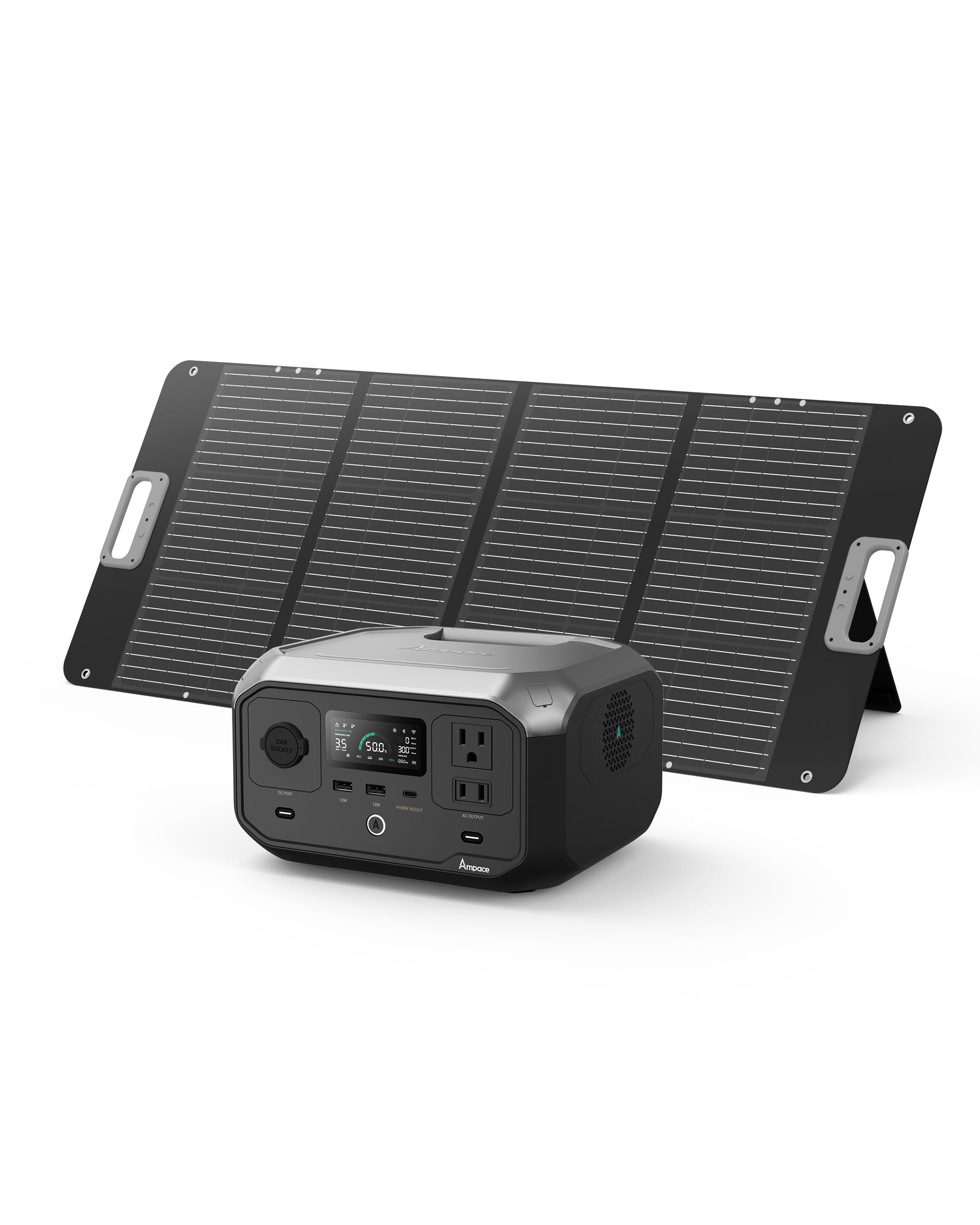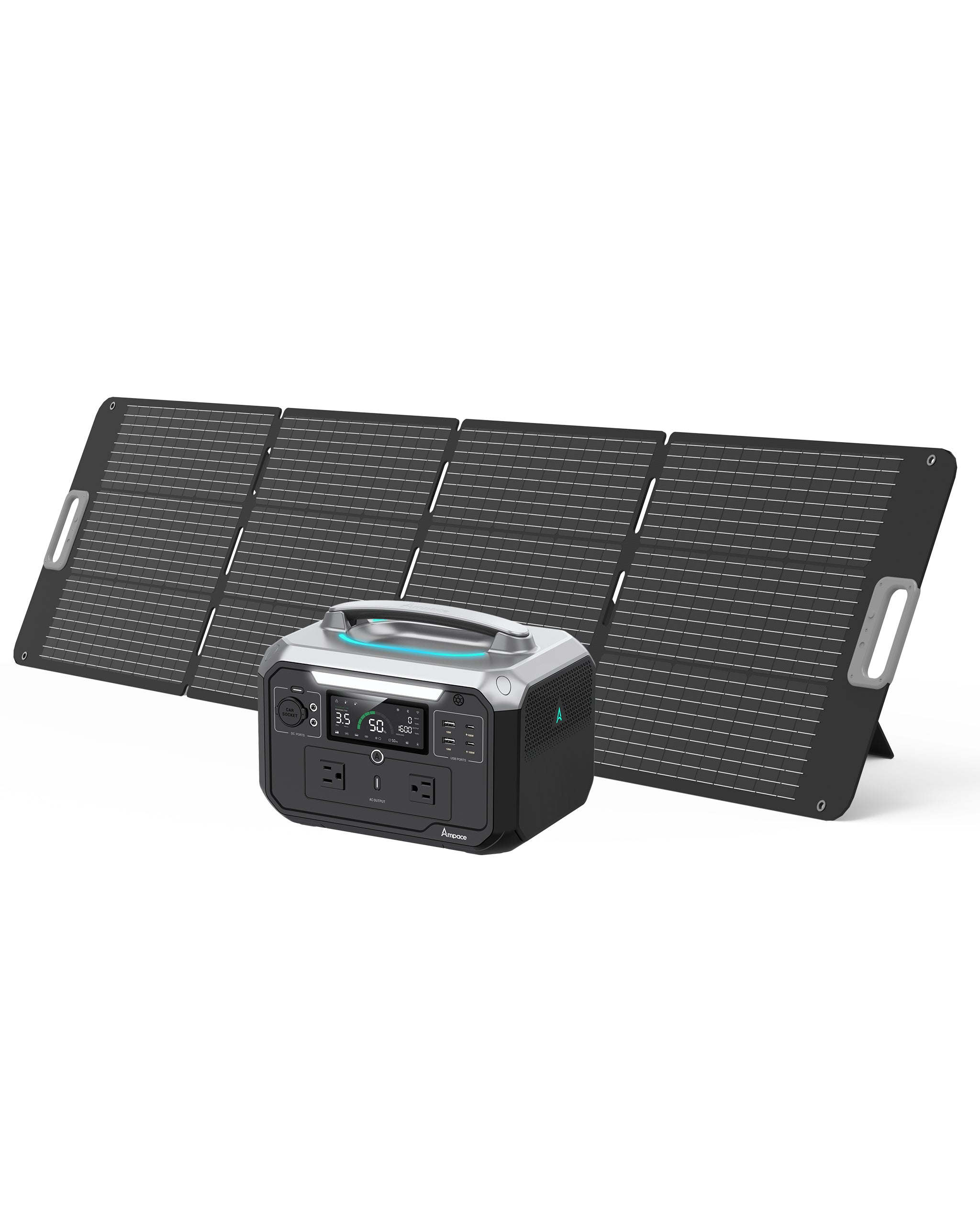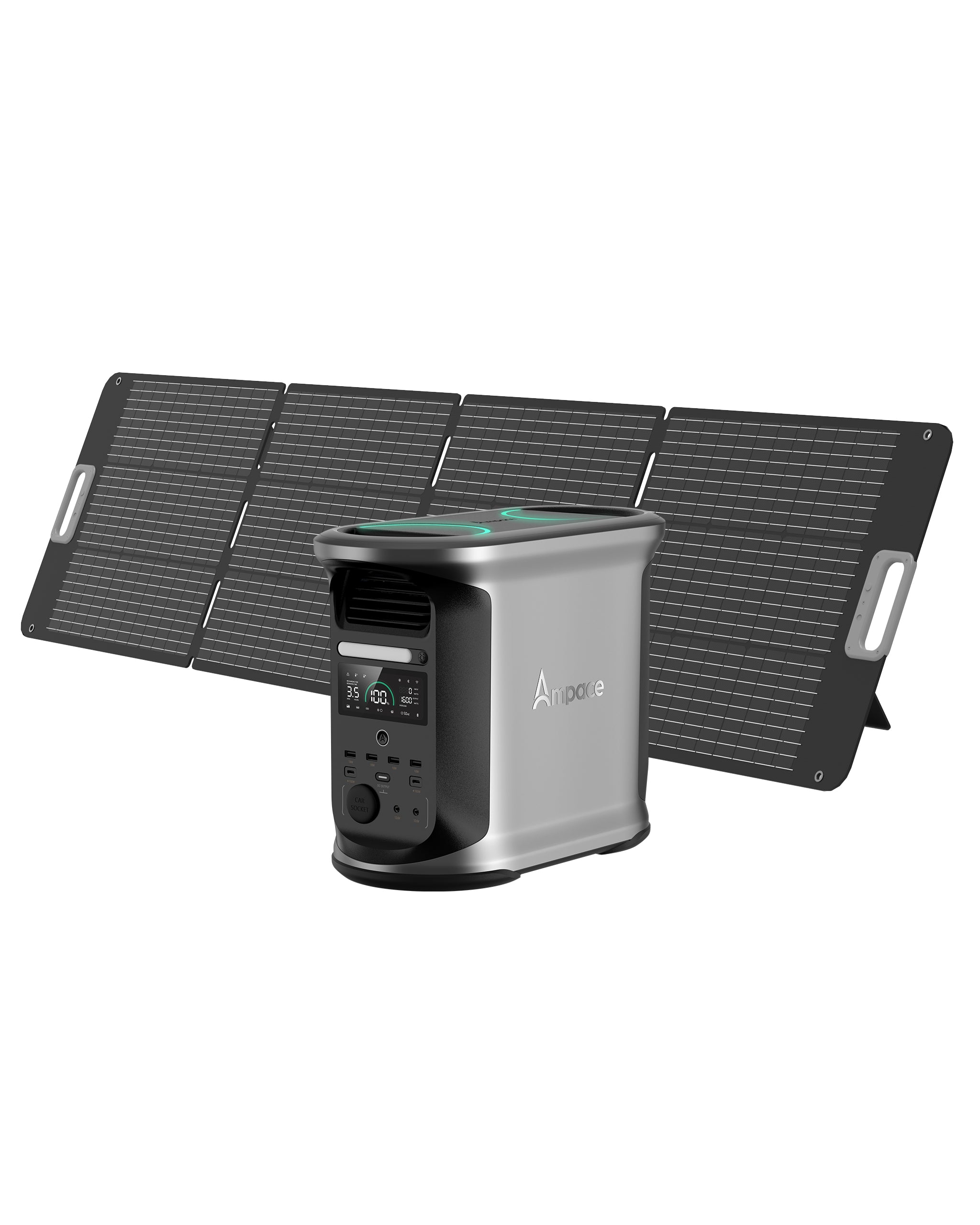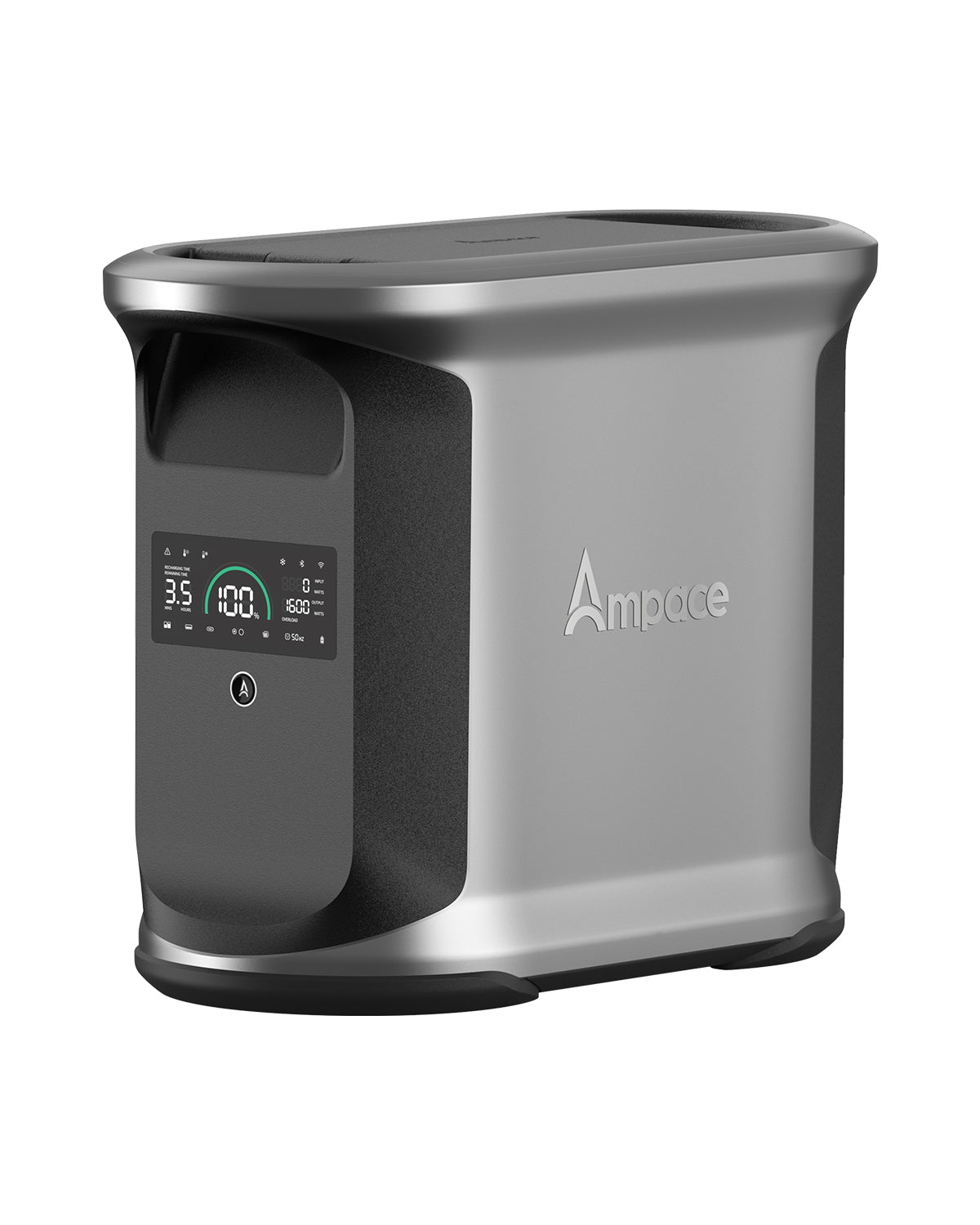Energy Savings
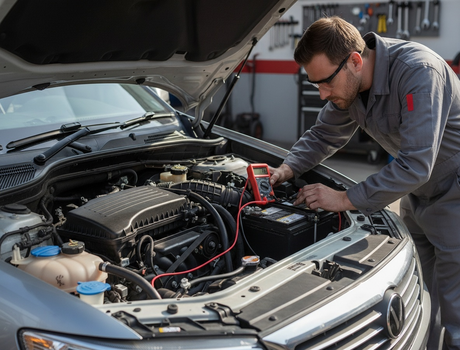
How Many Volts Is a Car Battery? 7 Fast Facts Every Driver Should Know
Ever turned the key and heard nothing but silence? That’s your car’s way of saying the battery has lost its charge. Every vehicle runs on volts, yet most drivers never think about how many volts a car battery actually has. Those tiny numbers decide whether your car starts smoothly or leaves you stranded on a cold morning. A healthy battery keeps everything running. In this guide, you will get detailed information on How Many Volts a Car Battery has. We break down seven fast facts about car battery voltage that every driver should know to keep their car reliable, safe, and ready to go.
Understanding Car Battery Voltage
A car battery is the heart of a vehicle’s electrical system. It stores energy and delivers the power needed to start the engine, run lights, and keep all electronic features working. Understanding these voltage levels helps drivers know if their battery is strong, weak, or needs replacement. It is a simple way to prevent sudden breakdowns and keep the car performing smoothly.
7 Key Facts Drivers Must Know
Drivers must have knowledge of their car. Catch seven facts that every driver should know.
Fact #1 – A Standard Car Battery Is 12 Volts, But Not Always Exactly 12
Most car batteries are called 12-volt batteries, but that number is not exact. When you check a healthy battery, it usually shows between 12.4 and 12.8 volts. This is because the 12 volts is just a nominal value, which is a name for the average power level it provides.
The voltage changes depending on how full the battery is and what condition it’s in. A new, fully charged battery will show closer to 12.7 or 12.8 volts, while one that has lost charge may drop to 12.3 volts or less. So, even though we call it 12 volts, it’s normal for the reading to move slightly above or below that mark.
Fact #2 – When Your Engine Is Running, Voltage Increases to 13.7–14.7 Volts
When the engine is on, the battery gets power from the alternator. The alternator keeps the battery charged and also runs the car’s electrical systems. Because of this, the voltage rises to about 13.7 to 14.7 volts.
This extra voltage helps the battery stay full while powering lights, radio, and other parts. If the reading goes above 15 volts, it means the alternator might be overcharging. If it falls below 13 volts, the alternator could be weak or not charging properly. Checking this range often helps catch problems early.
Fact #3 – A Dead Battery Usually Means Below 12 Volts
A car battery that drops below 12 volts is weak or dead. A healthy battery reads around 12.6 volts. Anything near 12.0 volts or less means it has lost most of its charge and might not start the engine.
Low voltage often happens if the car sits unused, the lights stay on, or the battery is old and worn out. Sometimes the reading still shows 12 volts, but the battery has no real power left. That’s because the capacity is gone, even if the voltage looks fine on a meter.
Fact #4 – You Can Check Voltage Easily With a Multimeter
You can test a car battery at home in one minute. A basic multimeter is enough.
Step by Step
• Park the car. Turn off lights and accessories.
• Set the multimeter to DC volts. Choose the 20 V range if it has ranges.
• Lift the hood. Find the battery posts.
• Touch the red probe to the positive (+) post.
• Touch the black probe to the negative (–) post.
• Read the number on the screen.
How to Read it
• 12.6–12.8 V = fully charged.
• 12.4–12.5 V = okay but not full.
• 12.1–12.3 V = weak.
• ≤ 12.0 V = likely dead or needs charge.
• Start the engine. If running, you should see 13.7–14.7 V. That means the alternator is charging.
Fact #5 – Cold Weather Can Lower Your Battery Voltage
Cold air slows down the chemical reactions inside a battery. When this happens, the battery cannot produce the same amount of power as it does in warm weather. The result is a small but noticeable drop in voltage.
On winter mornings, the reading on a multimeter might be lower even if the battery is healthy. The cold also makes the oil thicker, which puts more load on the starter motor and drains power faster.
To protect the battery in cold weather, keep it clean, dry, and covered if possible. Parking indoors helps too. Using a battery maintainer or trickle charger during long winter breaks keeps it fully charged and ready to start.
Fact #6 – Modern Cars and EVs Use Higher Voltage Systems
Older and regular cars use a 12-volt system, which has been standard for decades. It powers the starter, headlights, radio, and all basic electronics. But modern vehicles are becoming more advanced, and with that, their power needs have grown.
Hybrid cars now use 48-volt systems in addition to the regular 12V battery. The higher voltage helps run electric motors and start-stop systems more efficiently, improving fuel economy and reducing emissions.
Electric vehicles (EVs) go far beyond that. Their main battery packs can range from 300 to 800 volts, depending on the model. The higher voltage allows faster charging and stronger motor output.
Even with these significant changes, every EV and hybrid still includes a 12-volt battery for small accessories such as lights, wipers, locks, and infotainment systems. This keeps essential electronics working safely, even when the main high-voltage system is off.
Over time, car battery systems have evolved from simple 6V units to today’s high-performance packs that power not just engines, but entire electric drive trains.
Fact #7 – Proper Voltage Maintenance Extends Battery Life
You can take care of your battery voltage to make it last much longer. A simple check once a month helps you spot weak readings before the battery fails. Regular testing also enables you to understand how well your alternator is charging.
Clean battery terminals to stop corrosion. Dirt and rust can block current flow and cause voltage drops. Make sure the alternator belt is tight and the charging system is working correctly so the battery gets a steady charge.
If the car will sit unused for weeks, connect a smart charger or trickle charger. It keeps the battery topped up without overcharging. A few small habits like these can add years to your battery’s life and save you from sudden breakdowns.
Quick Voltage Reference Chart
Battery Condition Engine Off (V) Engine Running (V)
Fully Charged 12.6 – 12.8 13.7 – 14.7
Weak / Needs Charge 12.1 – 12.3 13.0 – 13.6
Dead / Faulty Below 12.0 Below 13.0
How to Keep Your Car Battery Charged Without Daily Driving (Using Ampace Andes 1500)
If your car stays parked for many days, the battery starts to lose charge. You can stop this problem with the Ampace Andes 1500 Portable Power Station. It is simple, safe, and quiet. You do not need to start your car often.
The Ampace Andes 1500 charges very fast. It reaches full power in about 55 minutes with Boost technology. You can also recharge it with a 600-watt solar panel in three to five hours. It works well for home use or outdoor trips.
This power station has a long life. It uses EV-grade LFP batteries that last more than six thousand cycles. That means over ten years of reliable use. It also includes a five-year warranty for peace of mind.
It has thirteen outlets for different devices. You can use the 120-watt car socket or DC ports to connect a 12-volt smart maintainer. This helps keep your car battery between 12.6 and 12.8 volts. It can also power small home tools and lights during an outage.
The Andes 1500 works well in any weather. It performs smoothly from minus four to one hundred and thirteen degrees Fahrenheit. It is very quiet at only thirty decibels. You can use it at night without noise.
If you travel often or do not drive much, this device helps a lot. It keeps your car battery full, saves towing costs, and provides clean power anywhere. The Ampace Andes 1500 is an innovative and easy way to protect your car battery.
Conclusion
Understanding your car battery voltage is an easy way to take care of your vehicle. A quick voltage check can tell you if the battery is healthy, weak, or close to failing. The ideal range is around 12.6 volts when the engine is off and 13.7 to 14.7 volts when it is running. Regular maintenance, clean terminals, and the use of a smart charger can extend the battery’s life. If you do not drive often, a portable power station like the Ampace Andes 1500 can help keep your battery charged safely. Small habits like these make a big difference and ensure your car starts strong every time.
FAQs
How many volts should a car battery have when fully charged?
A fully charged car battery should read between 12.6 and 12.8 volts when the engine is off. This shows that the battery is in good condition and ready to start your car.
At what voltage is a car battery weak or dead?
If the reading drops below 12.2 volts, the battery is weak. Anything close to 12.0 volts or less means it’s almost dead and may not have enough power to start the engine.
Can I charge my car battery with a portable power station?
Yes. You can use a portable power station like the Ampace Andes 1500 to keep your car battery charged. It can power a 12V smart maintainer to top up your battery safely at home or off-grid.
 Ampace - 2025-10-19
Ampace - 2025-10-19

Price Drops Make Ampace Andes the Top Value for Money Power Station
Portable power is no longer just a convenience. It has become a necessity for homes, travelers, and people who want to be prepared for emergencies. With the rise of smart devices, appliances, and the need for reliable energy outdoors, a dependable power station is essential. Ampace has built a strong name by combining fast charging, long battery life, and safe use in every model. Now, with special discounts, the Andes 1500, Andes 600, and Andes 300 are more affordable than ever, making them the top value-for-money portable power stations available today.
Why Ampace Stands Out in the Market
Fast Charging for Modern Needs
One of the biggest advantages of Ampace is its charging speed. Traditional power stations can take many hours to recharge, but Ampace models use A-Boost technology to cut that time drastically. The Andes 1500, for example, can reach a full charge in just 55 minutes. Even the compact Andes 300 can reach 80 percent in under an hour. This speed makes a huge difference during emergencies or while traveling, where every minute counts.
Long Life with EV-Grade Batteries
Ampace products are built with the same advanced battery technology used in electric vehicles. This gives them thousands of charging cycles and ensures reliable performance for up to 10 years or more. The Andes 1500 can last over 6,000 cycles, which is twice the lifespan of many competing brands. This long battery life means buyers get real value, knowing their investment will serve them for many years without decline.
Safe and Reliable Anywhere
Safety is another reason Ampace stands out in the market. All models run quietly, without fumes or fuel, making them safe to use indoors during blackouts. They are also tough enough to perform in outdoor conditions, from camping trips to RV adventures. With built-in protections against overloads, short circuits, and extreme temperatures, Ampace gives users peace of mind no matter where they are.
Ampace Andes 1500 – Heavy-Duty Power at a Discount
The Ampace Andes 1500 Portable Power Station is designed for people who need serious, long-lasting power. It can deliver up to 2400W output with a surge capacity of 3600W, which means it can run almost any household appliance. From refrigerators and microwaves to fans and laptops, this power station keeps your home and essentials running smoothly.
Charging speed is another area where it stands out. Thanks to Ampace’s A-Boost fast charging technology, the Andes 1500 reaches a full charge in only 55 minutes. This is almost twice as fast as other power stations in the same category. If you prefer solar power, it can recharge in about 3 to 5 hours with compatible panels, making it a reliable choice for both home and outdoor use.
Durability is a big part of its value. The Andes 1500 comes with an EV-grade LiFePO4 battery that lasts over 6,000 charge cycles. That gives you more than 10 years of dependable use. It is also built for safety, with stable performance in temperatures from -4°F to 113°F.
Right now, it is available on different independent websites for just $499, which is a 64% discount from the original price. At this price, it easily outshines more expensive competitors, offering the same or better performance at a fraction of the cost.
Ampace Andes 600 – The Balanced Choice
The Ampace Andes 600 Pro Portable Power Station is a perfect mix of power and portability. It delivers up to 1800W peak output, making it capable of running up to 80% of common household and travel appliances. With 9 versatile ports, including AC outlets, USB-C, and USB-A, you can charge or power multiple devices at the same time. From laptops and phones to lights and fans, it ensures you are always connected and comfortable.
One of its standout features is the fast charging system. The Andes 600 can go from 0 to 80% in just 1 hour using Ampace’s A-Boost technology. For solar charging, it only takes 3 to 5 hours with a 200W solar panel, which makes it an excellent option for camping trips and off-grid adventures.
The battery capacity is strong at 584Wh, and the advanced LiFePO4 cells give it a long lifespan of more than 2,000 cycles. That means years of reliable use without worrying about battery decline. It also includes a Battery Management System (BMS) for protection against short circuits, overloads, and overvoltage, so safety is never compromised.
For a limited time, the Andes 600 is available on many independent websites, including Amazon, for $199, which is a 56% discount from its actual price. This deal makes it one of the most affordable mid-range portable stations in the market.
Light enough to carry yet powerful enough for daily needs, the Ampace Andes 600 is the balanced choice for families, travelers, and outdoor workers.
Ampace Andes 300 – Compact and Budget-Friendly
The Ampace Andes 300 Portable Power Station is the most compact model in the Andes lineup, yet it delivers reliable performance for daily essentials. With a 300W pure sine wave output, it can safely power up to 80% of basic devices. This includes lights, fans, WiFi routers, laptops, and even small medical devices like CPAP machines. It comes with 6 outlets, including AC ports, a USB-C PD 100W port, USB-A ports, and a car socket, so you can keep multiple devices running at once.
One of the biggest advantages of the Andes 300 is its lightweight design. Weighing just 8.2 lbs and equipped with a sturdy one-piece aluminum handle, it is easy to carry anywhere. This makes it a perfect choice for camping, road trips, RV travel, or even keeping as a backup at home. Despite its small size, it switches to EPS mode in just 20ms during sudden outages, keeping your devices protected.
Charging is incredibly fast. The Andes 300 reaches 80% in just 45 minutes and a full charge in only 1 hour. For solar charging, it takes around 2.6 hours, which makes it a dependable option for off-grid use. With advanced battery technology, it can last for over 2,500 charge cycles, giving you up to 10 years of use.
For October, it is available on many online platforms for just $99, a massive 60% discount from the original price. This makes it the cheapest power station in its class while still offering premium features. For emergencies, travel, or light daily use, the Andes 300 is an unbeatable value for money.
Side-by-Side Comparison: Andes 1500 vs 600 vs 300
Here is a detailed side-by-side comparison table of the Ampace Andes 1500, Andes 600, and Andes 300, so buyers can see which model suits their needs best:
Feature
Andes 1500
Andes 600
Andes 300
Deal Price
$499 (limited-time)
$199 (56% off)
$99 (October special, 60% off)
Weight / Portability
Heavier (full size)
Midrange
Lightest – ~ 8.2 lbs
Charging Speed
Full in ~ 55 minutes (with wall power)
0 → 80% in ~ 1 hour
0 → 80% in ~ 45 minutes
Solar Charging Time
3–5 hours
3–5 hours
~ 2.6 hours
Output Power
2400W continuous, surge 3600W
~ 1800W peak
300W continuous
Number of Outlets / Ports
13 outlets (AC, USB-C, USB-A, DC, car)
9 versatile outlets
6 outlets (AC, USB-C PD, USB-A, car)
Battery Life / Cycles
6,000+ cycles (10+ year lifespan)
~ 2,000+ cycles with high retention
~ 2,500 cycles (10 year equivalent)
Ideal Use Cases
Home backup, RV, off-grid setups, powering heavy loads
Camping, family travel, midrange load use
Light users, emergencies, travel, charging essentials
Why It’s Value for Money
Heavy duty performance for a discount price; matches or outperforms costlier units
Balanced power and portability; handles most appliances yet easy to carry
Cheapest in class with premium charging speed and features
Why Now Is the Best Time to Buy Ampace
· These discounts are the lowest prices ever offered for the Ampace Andes series.
· The deals are limited in time and stock, so they may sell out quickly.
· Buying now means you have reliable power in place before outages, camping trips, or emergencies.
· Waiting may cost you more or risk missing your preferred model.
Conclusion
The Ampace Andes series proves that portable power can be powerful, reliable, and budget-friendly at the same time. From the heavy-duty Andes 1500, the versatile Andes 600, to the compact Andes 300, there is a model for every lifestyle and budget. With limited-time price drops, buyers now have the chance to secure these stations at the lowest cost ever. These deals deliver premium features at unmatched prices, making this the perfect time to invest in long-term energy security. Whether for home backup, travel, or emergencies, Ampace offers the best value for money in the market.
FAQs
Q1. How fast does Ampace charge?
Ampace models recharge in under an hour with wall charging. The Andes 1500 fully charges in 55 minutes.
Q2. Can Ampace power home appliances?
Yes. From lights and fans to fridges and laptops, the Andes series covers most essential devices.
Q3. Is it safe to use indoors?
Absolutely. Ampace runs silently with no fumes, making it safe for home use during outages.
Q4. How long do the batteries last?
Depending on the model, Ampace batteries last 2,000 to 6,000+ cycles, equal to 10 years of use.
Q5. Are the Amazon discounts limited?
Yes. These are time-bound deals with limited stock, so prices will return to normal after the sale.
 Ampace - 2025-10-10
Ampace - 2025-10-10
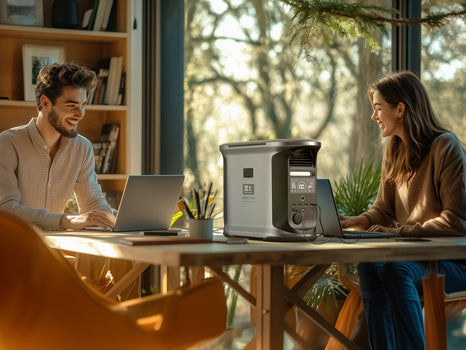
Energy Savings
 Ampace - 2025-06-02
Ampace - 2025-06-02
Is a Solar Generator Worth the Investment?
Is it worth buying a solar generator? The answer is yes. A solar generator is worth your investment. It provides long-term, affordable, clean, and sustainable energy, help you save on electricity costs, and serves as a backup power source for your home, helping you get through power outages.
Ampace is committed to making green energy convenient and accessible for every user. Our solar power solutions are not only efficient and portable but also a reliable choice for outdoor adventures or home emergencies.
Residential Solar
Rooftop solar systems are a solar power solution that many households are considering. To maximize the use of solar panels, they need to be placed at the optimal angle and position to improve solar energy absorption efficiency. You can invest in solar trackers, which can automatically adjust the panel’s angle throughout the day to follow the sun’s path.
The size of the solar system you need depends primarily on two factors: your household’s average daily energy consumption and the typical peak sunlight hours in your region. These factors also affect the overall cost of the system. According to the latest data from 2025, the average cost of a residential rooftop solar installation ranges between $18,500 and $25,000, depending on various considerations.
What Is a Solar Generator?
A solar generator consists of solar panels and a portable power station, used to capture solar energy and store it for later use. You can use one as a mobile power source, a home backup power source, or both. Portable solar generators are a reliable home backup power solution during outages and a convenient power source for off-grid travel. As the name suggests, standalone solar generators are smaller and easier to carry. Most portable generators are plug-and-play, requiring no professional installation.
The price of portable solar generators typically ranges from around $349 (Ampace Andes 300 with a 100W portable solar panel) to $2,749 (Ampace Andes 1500 with a 600W solar panel). Ampace portable solar generators are highly scalable in terms of power output and storage capacity, and they can accommodate a greater number of solar panels for solar charging.
Using the Ampace Andes 1500 with three 200W portable solar panels allows you to power your entire household during extended power outages. Ampace power stations feature a thin tempered glass design, with durability five times higher than comparable solar panels. Their IP67 protection rating makes them both waterproof and dustproof.
What Are the Benefits of Purchasing a Solar Generator?
Compared to traditional fossil fuel generators, solar generators have many significant advantages:
Clean, Renewable EnergySolar generators use solar energy to produce electricity, a clean and renewable energy source. Compared to fossil fuel generators like gas or diesel, solar power systems emit no toxic gases or greenhouse gases, making them harmless to the environment. This eco-friendly characteristic makes them an ideal choice for sustainable development.
Reduced Long-Term CostsAlthough the initial purchase cost of a solar generator may be higher than that of a traditional generator, in the long run, it can significantly save expenses. Solar energy is completely free to obtain. There is no need to pay for fuel costs and it will not be affected by the increase in fuel prices.
Solar generators have very low maintenance requirements and almost no maintenance requirements. Compared with fossil fuel generators, they need to regularly maintain mechanical parts, which is time-consuming and expensive.
Quiet OperationUnlike the noise produced by traditional generators during operation, solar generators work completely silently. This quiet characteristic ensures they won’t disturb your life, making them ideal for residential areas, camping, or other settings where a quiet environment is needed.
Usage FlexibilitySolar generators consist of a backup battery and solar panels, which are typically easy to carry. You can place them in a car or carry them by hand, allowing you to move them anytime to meet the needs of outdoor activities.
Ampace Andes 1500+200W Portable Solar Panel
The Ampace Andes 1500 boasts a 1462Wh capacity and 2400W output (Surge 3600W), powering most household appliances with ease. Weighing only 36.8 lbs, it features A-Boost technology for a full charge in just 55 minutes, 50% faster than competitors. Paired with a 200W portable solar panel, it offers 23% higher efficiency, foldable design, and IP67 waterproofing for reliable green energy anywhere.
Ampace Andes 600 Pro Solar Generator + 200W Solar Panel
The Ampace Andes 600 Pro packs a 584Wh capacity and 600W output (Surge 1800W), powering lights, fridges, or laptops. At just 16.8 lbs, it charges to 80% in 1 hour with A-Boost technology. The 200W solar panel, with 23% higher efficiency, is foldable and IP67 waterproof, recharging in 3-5 hours for eco-friendly, off-grid power.
Why Choose Ampace?With a LiFePO4 battery lasting over 2000 cycles (10+ years) and a 3-year warranty, the Andes 600 Pro offers 9 outlets and quiet 30 dB operation. Perfect for camping, RV trips, or emergencies, it includes smart app control for easy, reliable, green energy on the go.
 Ampace - 2025-06-02
Ampace - 2025-06-02
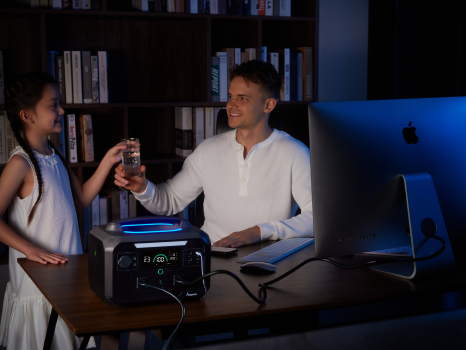
Energy Savings
 Ampace - 2025-04-26
Ampace - 2025-04-26
Milliamps to Amps (mA to A) Conversion Guide 2025 Updated
Table of Contents
What Is an Ampere?
What Is a Milliampere?
How to Convert mA to A
How to Convert A to mA
What’s the Difference Between Ah and Wh?
Ampace Portable Power Station Explained
Curious about the electrical current your devices use? Try this Milliamps to Amps (mA to A) Calculator to easily convert between milliamps and amps. Understand your power consumption and optimize energy use with Ampace’s portable power stations.
Milliamps to Amps (mA to A) Calculator
Milliamps (mA)
Amps (A): 0
Amps (A)
Milliamps (mA): 0
Nowadays, electrical appliances are part of daily life, but do you understand the units of electricity? Milliamps (mA) and amps (A) are units of current. Understanding their concepts and conversion methods can help you calculate and save energy, leading to significant savings in money and time, especially when choosing energy-efficient appliances. In this guide, Ampace will explain the essentials of converting amps to milliamps.
What Is an Ampere?
An ampere (A), or amp, is the standard unit of electric current in the International System of Units (SI). It measures the rate at which electric charge flows through a circuit. Think of it as the volume of water flowing through a pipe—the higher the amperage, the greater the current.
What Is a Milliampere?
A milliampere (mA) is one-thousandth of an ampere (1 mA = 0.001 A). It’s used to measure smaller currents, such as those in portable devices, sensors, or battery-powered systems. The prefix “milli” denotes a factor of 1/1000, making milliamps ideal for precision measurements without dealing with tiny decimal values.
How Many Milliamps are in an Amp
One ampere (A) is equal to 1000 milliamps (mA). This 1:1000 ratio is the key to converting between these units. For instance, a device using 1 A of current is drawing 1000 mA, while a current of 250 mA equals 0.25 A.
How to Convert mA to A
Converting milliamps (mA) to amps (A) is simple because 1 ampere equals 1000 milliamps. To convert, divide the milliamp value by 1000. For example, if a device draws 4500 mA, divide 4500 by 1000 to get 4.5 A.
How to Convert A to mA
Converting amps (A) to milliamps (mA) is equally straightforward. Since 1 A equals 1000 mA, multiply the amp value by 1000. For instance, if a circuit uses 3.2 A, multiply 3.2 by 1000 to get 3200 mA.
Milliamps (mA)
Amps (A)
100 mA
0.1 A
200 mA
0.2 A
500 mA
0.5 A
1000 mA
1.0 A
1500 mA
1.5 A
2000 mA
2.0 A
3000 mA
3.0 A
5000 mA
5.0 A
What’s the Difference Between Ah and Wh?
You may have come across Ah (amp-hours) and Wh (watt-hours) as units. Wh represents the energy stored in a battery, indicating its total power output, while Ah measures the battery’s charge capacity, often used to describe its runtime. The two are linked through voltage (V) with the formula:
Ah = Wh ÷ V
Wh = Watt-hours (energy)
V = Volts (voltage)
Ah = Amp-hours (capacity)
For example, the Ampace Andes 1500 battery offers 1462 Wh of energy capacity. We usually express the battery capacity of a product in Wh or kWh, so you can understand the battery's lifespan based on the wattage used per hour. Here are conversion examples to Ah:
At 12V (common for car batteries):Ah = 1462 Wh ÷ 12 V ≈ 121.83 Ah
At 3.7V (common for lithium batteries, like in phones):Ah = 1462 Wh ÷ 3.7 V ≈ 395.14 Ah
These conversions help you understand battery performance and choose the right equipment for better energy efficiency.
Ampace Portable Power Station Explained
Ah and Wh are units for measuring battery capacity. If you need to choose a portable power station, please pay attention to these values. Ampace focuses on advanced lithium-ion battery business, offering portable power stations, solar generators, and portable solar panels, providing high-capacity energy solutions. These products ensure the needs of outdoor exploration, emergency backup and sustainable energy.
Ampace Andes 1500 : with its 1462Wh capacity and 2400W output (Surge 3600W), is perfect for high-power demands, such as powering household appliances during outages or supporting off-grid living.
Ampace Andes 600 Pro : strikes a balance between power and portability, offering a 584Wh LiFePO4 hybrid battery and 600W output (Surge 1800W), ideal for camping, outdoor adventures, and emergency backup.
Ampace Andes 300 : weighing just 3.72kg (8.2 lbs) with a 266Wh capacity and 300W output, is designed for lightweight portability, making it great for charging phones and laptops during camping or short power outages.
Read More
How to Power Your Drone with a Portable Station?
What You Need to Know About Pure Sine Wave Inverters?
Breaking Down the Costs of Life on the Road: Full-Time RV Living
The Two Best Portable Solar Panels 2025 Updated
Embrace Off-Grid Living with Solar-Powered Cabins
 Ampace - 2025-04-26
Ampace - 2025-04-26
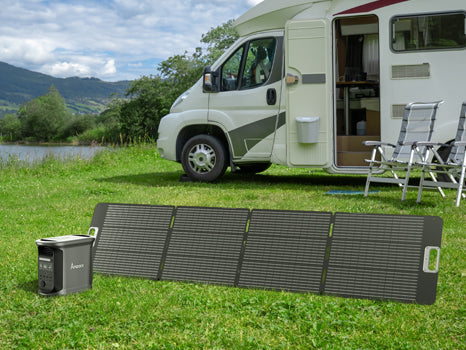
Energy Savings
 Ampace - 2025-04-01
Ampace - 2025-04-01
Unlock the Full Potential of Your Solar Panels with the Right Angle
Table of Contents
What Is a Solar Panel Angle?
How Should Ampace Solar Panels Be Oriented for Maximum Efficiency?
Factors Affecting Solar Panel Angle
Why Is the Tilt Angle Important for Ampace Solar Panels?
How to Find the Best Angle for a Solar Panel
Ampace Solar Panels: Power Your Outdoor Adventures
FAQs for Best Solar Panel Angle
The key to getting the most out of your solar panels is finding the best angle. Just like how plants reach toward the sun, your panels need to be tilted in the right direction to soak up all that sunlight. Whether it's the hot summer sun or the softer winter rays, adjusting the angle of your panels can make a huge difference in how much energy they produce.
Get the angle right, and you’ll see better efficiency, lower energy bills, and less reliance on the grid. Let’s explore how to find the perfect angle for your solar panels!
What Is a Solar Panel Angle?
The solar panel angle is the tilt at which your panels are installed. It determines how much sunlight they can absorb throughout the day. The ideal angle helps your panels capture the most energy. It’s usually based on your latitude and changes with the season. A good angle maximizes energy production, ensuring your system works efficiently.
The adjustment of the angle in implementing a Solar Panel is essential to get regular energy. In many countries, shorter daylight hours limit sun exposure, reducing the time solar panels receive direct sunlight. The time of solar panels getting sunlight also varies due to weather. In this case, the angle makes it easy for the solar panels to get the required sunlight.
How Should Ampace Solar Panels Be Oriented for Maximum Efficiency?
The Solar Panel needs to be oriented in a way that it captures the most amount of sunlight to generate energy. In Northern Hemisphere regions like the USA and Canada, Solar Panel direction should be south to receive maximum sunlight. In Southern Hemisphere regions like Australia and South Africa solar panel direction should be towards the north to get maximum exposure of sunlight.
Tilt angle is also very important in getting maximum efficiency from Solar Panels. To get maximum efficiency, it should match the location’s latitude. Also, varying the location in seasoned weather further enhances the performance of solar panels. In winter a steep angle is useful while in summer flat tilt helps to maximize efficiency of solar panels.
Portable Ampace Solar Panels increase their efficiency when used with ideal tilt angle. Using advanced methods like Solar Tracking mount can further improve the performance of solar panels by automatically adjusting panel’s orientation toward the sun. Proper orientation makes the Solar Panel produce efficient energy.
In the United States, solar panel tilt is around 30 to 35 degrees facing south to get the maximum energy in autumn. It changes to 50 to 55 degrees during winter. During summer, this angle reduces to around 15 degrees. The further the user's location is away from the equator, the more tilt angle will be needed for the installation of the solar panel.
Factors Affecting Solar Panel Angle
Your solar panel angle depends on several factors. Here are some key factors.
Geographical Location: It plays a big role in solar panel’s performance. The further north or south you are, the more you’ll need to adjust your panel tilt.
Roof Type: The roof type matters, too. A flat roof will need tilt frames, while a sloped roof might naturally fit your panels.
Sun Exposure: It is another key factor. Panels should be placed where they’ll get the most sunlight, avoiding shaded areas.
Season Changes: Adjusting the angle during different seasons helps maximize energy production year-round.
Why Is the Tilt Angle Important for Ampace Solar Panels?
The angle of the Ampace Solar Panel is very essential to get a proper source of energy. If the tilt is too steep or flat, Solar Panel will not be able to get proper sunlight. This will lead to not getting proper energy from the sunlight.
For Portable Ampace Solar Panels , manually adjusting the tilt allows the Panels to receive more sunlight. For example, in the USA or other Northern Hemisphere regions, a tilt equal to the location’s latitude is ideal. So, finding the best angle before installing the solar panel can increase efficiency and long-term cost savings.
How to Find the Best Angle for a Solar Panel
Seasonal adjustment of the solar panel's angle ensures proper sunlight exposure. For example, in the United States of America, the average daylight hours in Summer and Winter are 14-16 and 8-10 hours, respectively. This massive reduction in daylight hours increases the angle of the solar panel in winter.
The seasonal alternation in solar panels could vary up to more than 15°. For example, in California, Solar Panel optimal angle is 49° in Summer which reduces remarkably to 19° in winters. Geographical locations also play a very important role in the tilt angle of the solar Panel.
Using Solar Angle Tools
Solar angle calculators and apps, like PVWatts or SolarCalc, are great tools to help you find the best angle for your solar panels. These tools use your location, latitude, and the time of year to suggest the most efficient tilt for maximum energy production. They can save you time and effort, making it easier to optimize your setup.
It is important to consult a professional installer even if you have access to these tools. They have the expertise to ensure your panels are placed correctly, factoring in other elements like roof pitch and shading. This ensures you get the best possible performance from your system.
Ampace Solar Panels: Power Your Outdoor Adventures
Ampace offers two portable solar panel options to meet a variety of outdoor power needs, ensuring you can charge your devices and stay connected wherever your adventures take you.
Ampace 100W Solar Panel
Lightweight and Portable: At just 10.36 pounds, this solar panel is easy to carry, making it an ideal choice for activities like hiking, camping, or road trips.High-Efficiency Conversion: With a 23% conversion rate, it efficiently transforms sunlight into usable power for fast charging.Compact Design: It folds down to a small size, perfect for packing and transporting with ease.
Ampace 200W Solar Panel
Greater Power Output: Delivering 200W, this panel is suited for scenarios requiring more electricity, such as group camping, extended outdoor trips, or emergency power needs.Equally Efficient: It also features a 23% conversion rate, ensuring rapid and reliable charging.Durable Design: Rated IP67, it’s built to withstand harsh weather conditions like rain and snow, offering long-lasting performance.Both options provide a reliable power supply in the outdoors, keeping your devices charged and your adventures energized. Whether you’re a solo traveler or part of a larger group, Ampace solar panels offer the flexibility and efficiency you need to harness the sun’s energy effectively.
FAQs for Best Solar Panel Angle
Why does the angle of my solar panels matter?
The angle of your solar panels directly impacts how much sunlight they absorb. The right tilt maximizes energy production, leading to better efficiency and lower energy bills.
How can I determine the best angle for my solar panels?
The best angle is usually based on your geographical location and the season. Tools like PVWatts or SolarCalc can help you calculate the optimal tilt, but it's always a good idea to consult a professional installer for the most accurate setup.
How does the tilt angle change with the seasons?
During winter, a steeper tilt helps panels absorb more sunlight due to shorter daylight hours. In summer, a flatter tilt is more efficient as the sun is higher in the sky, making it important to adjust your panels seasonally for maximum efficiency.
Can I adjust the angle of my portable solar panels?
Yes! Portable solar panels like Ampace can be manually adjusted to capture the most sunlight. Adjusting the tilt based on your location and the season helps increase their efficiency.
Do solar panel angles vary by region?
Absolutely. For example, in the Northern Hemisphere, solar panels should face south, while in the Southern Hemisphere, they should face north. The tilt also varies depending on your location’s latitude.
 Ampace - 2025-04-01
Ampace - 2025-04-01
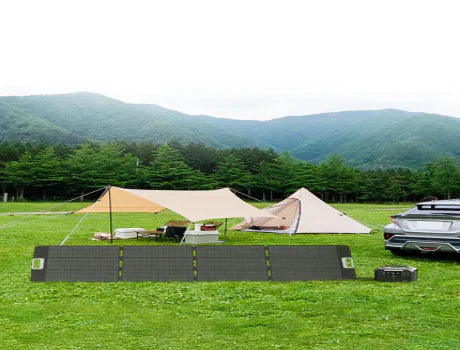
Energy Savings
 Ampace - 2025-03-17
Ampace - 2025-03-17
How Solar Panels are Empowering Remote Communities
Portable polar panel gives more ease due to its flexibility for temporary power needs. This feature is also very effective to make solar panels safe from breaking down due to extreme weather conditions.
 Ampace - 2025-03-17
Ampace - 2025-03-17
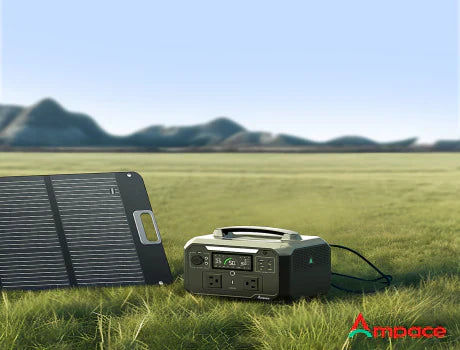
Energy Savings
 Ampace - 2025-02-09
Ampace - 2025-02-09
The Two Best Portable Solar Panels (2025 Updated)
As 2025 approaches, have you selected the best portable solar panel to handle all kinds of charging scenarios in the future? Ampace is one of the leading brands that help users choose clean energy.
 Ampace - 2025-02-09
Ampace - 2025-02-09
Page 1 of 2





